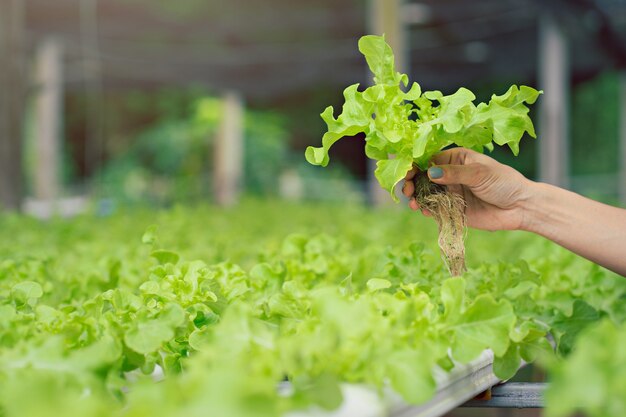Greetings and welcome to Electroculture Magazine. As we explore the intriguing field of electroculture, be ready for an exciting voyage into the center of agriculture’s future. Envision turning your landscape into a bright, energetic oasis where each plant is given life by the quiet buzz of innovation. This investigation explores the science and possibilities of electroculture, a cutting-edge technique that uses low-voltage electricity to promote plant growth. This essay will take you on a tour of the fascinating world of 21st-century farming, where nature and technology combine to reinvent farming’s fundamental principles.
Uncover the unrealized possibilities of this technology as we explore its historical origins and illuminate the revolutionary experiments that led to the development of this fascinating method. We will explore the major factors influencing this technology in the crucial year of 2024, from the difficulties it faces—such as public opinion and cost—to the enormous advantages it offers—such as higher yields, less of an influence on the environment, and enhanced food security. Come along as we take a look into the future and investigate how Electroculture might be the catalyst for a sustainable agricultural revolution that revitalizes both fields and gardens.
What is Electroculture?
Often called electrostimulation, electroculture is at the forefront of agricultural innovation, providing a special method for enhancing plant development. Using electrodes carefully positioned close to plant roots, low-voltage electricity is applied directly to the soil in this transformational technique. The interplay between electric fields and plant physiological processes, which promotes development and has the potential to transform conventional agricultural methods, is the fundamental idea behind electroculture.
As we delve into the intriguing world of this technology, it becomes apparent that this method holds the promise of not only increasing yields but also addressing crucial environmental and sustainability challenges. By unlocking the latent potential of electric fields, this technology represents a dynamic fusion of technology and agriculture, offering a glimpse into a future where the cultivation of crops is not only more efficient but also aligned with ecological considerations. Explore the science, history, and prospects of this technology as it emerges as a beacon of innovation in the ever-evolving landscape of sustainable farming.
cascade of positive effects
This gentle current creates a mild electric field that interacts with the plant’s bioelectrical processes, leading to a cascade of positive effects:
- Enhanced nutrient uptake: The electric field increases the permeability of cell membranes, allowing plants to absorb nutrients from the soil more efficiently.
- Stimulated root growth: Electrical stimulation encourages root development, creating a more robust root system that can access deeper water and nutrients.
- Improved seed germination: Applying a weak current to seeds can accelerate germination and increase seedling vigor.
- Boosted photosynthesis: Electroculture seems to enhance the efficiency of photosynthesis, leading to faster plant growth and higher yields.
The Science Behind the Spark
While the exact mechanisms of electroculture are still being unraveled, several theories explain its positive effects on plants:
- Ionic movement: The electric field alters the movement of charged ions (molecules with an electrical charge) within the plant, potentially influencing metabolic processes.
- Membrane potential changes: The electrical stimulation might affect the electrical potential across plant cell membranes, impacting nutrient uptake and signaling pathways.
- Reactive oxygen species: The weak current could trigger the production of reactive oxygen species (ROS) in plants, which act as signaling molecules, stimulating stress responses and ultimately benefiting growth.
Electroculture in Action:
While still in its early stages, this technology is being explored in various settings:
- Home gardens: Hobbyists are experimenting with DIY electroculture setups, using simple kits or even repurposed materials.
- Commercial agriculture: Some farms are testing electroculture on a larger scale, particularly for high-value crops like fruits and vegetables.
- Hydroponics and aquaponics: Electroculture seems to work particularly well in controlled environments like hydroponics and aquaponics, where nutrient delivery can be optimized.
Benefits of Electroculture:
- Increased yields: Studies have shown that this technology can boost crop yields by up to 20-30% compared to traditional methods.
- Improved quality: Plants grown with electroculture often exhibit enhanced flavor, texture, and nutritional content.
- Reduced fertilizer and water use: By improving nutrient uptake and water efficiency, electroculture can lead to more sustainable agricultural practices.
- Organic and eco-friendly: Electroculture avoids the use of chemical fertilizers and pesticides, making it an attractive option for organic growers.
Challenges and Considerations:
- Limited research: More research is needed to fully understand the mechanisms of electroculture and optimize its application for different crops and growing conditions.
- Technical challenges: Designing and implementing effective electroculture systems can be challenging, especially for large-scale operations.
- Cost and safety: Setting up an electroculture system requires an initial investment in equipment and expertise. Safety precautions are essential to avoid electrical shock hazards.
Electroculture: A Glimpse into the Future of Farming?
The emerging field of this technology has great potential as we approach a new age in agriculture, providing a window into what lies ahead for farming. Even though electroculture is still in its infancy, it offers an intriguing future that has the potential to drastically alter the food production environment. The current advancements in this cutting-edge technology’s research and development have the potential to completely transform traditional agricultural methods and introduce a new paradigm characterized by increased production, sustainability, and efficiency.
The core premise of this technology involves the application of low-voltage electricity, either directly to the soil or through strategically positioned electrodes near plant roots. This interaction between electric fields and plant physiology opens avenues for stimulating growth and optimizing yields. While the technology is currently in its infancy, the prospects it holds are far-reaching. Imagine a future where agricultural landscapes are cultivated not just for output but also with a conscientious eye on environmental impact.
The idea of incorporating electroculture into one’s gardening regimen is intriguing to green thumbs. You may experience the potential benefits of this technology directly by doing a straightforward experiment in your garden that could produce amazing results. Agriculture might be electrified through this technology, which could be the catalyst for a future in which food production is in harmony with efficiency, sustainability, and innovation. The captivating draw of electroculture challenges us to reevaluate the fundamentals of farming as we traverse this unexplored region, opening the door to a more dynamic and sustainable food production environment.
Remember:
- Always prioritize safety when working with electricity. Consult qualified professionals for setting up your electroculture system.
- Start small and experiment with different electrode configurations and current strengths to find what works best for your plants and growing conditions.
- Electroculture is not a magic bullet. It’s best used in conjunction with good soil management, organic practices, and proper irrigation.
With a little spark of curiosity and a dedication to sustainable practices, you can unlock the electrifying potential of electroculture and grow a thriving garden that’s buzzing with life!





















